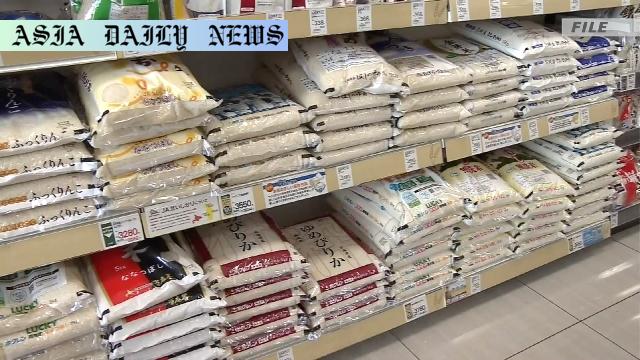Rice Shortage: Half of Japan’s rice wholesalers report no change in the national shortage, even after government intervention.

The Current State of Rice Shortage
Japan is battling a lingering rice shortage, with little relief in sight, despite the government’s measures to release national stockpiles. According to NHK’s recent survey of 13 members of the National Rice Wholesalers’ Cooperative Association, seven report no improvement in the situation. With prices remaining stubbornly high and no substantial increase in supply, confidence among wholesalers about the shortage resolving soon is low. A wholesaler in Kyushu, Japan’s southwestern region, reported that prices for the next harvest are likely to be even steeper compared to last year.
Economic Impacts of the Rice Shortage
The repercussions of this scarcity are not limited to wholesalers. Supermarkets and consumers are equally bearing the burden, as five wholesalers revealed plans to further increase prices in the coming months. To mitigate the supply strain, some wholesalers have started rationing rice sales to ensure stocks endure until the year’s harvest. However, this stopgap measure only addresses the short-term dilemma, leaving long-term challenges unresolved.
Production Challenges and Future Outlook
The issue of rice scarcity runs deeper, with long-term production capacity limitations emerging as a major hurdle. University of Tokyo Professor Ando Mitsuyoshi highlighted that Japan’s rice production capacity has been steadily declining, primarily due to the aging farming population. Many farmers are exiting the industry without successors, diminishing the nation’s ability to scale up rice production. The only hope lies in increased harvests from rice-producing regions in eastern Japan, but uncertainties persist, as factors like climate, labor shortages, and land use remain unpredictable. The size of the next harvest will serve as a vital indicator of whether Japan’s rice supply crisis can be mitigated or will further exacerbate.
Policies and Possible Solutions
Addressing Japan’s rice shortage will require both immediate and long-term interventions. Short-term price stabilizations may need expanded governmental support, possibly via subsidies to farmers and wholesalers to offset rising costs. Additionally, policies that encourage young individuals and recent graduates to enter the agricultural sector could alleviate the aging workforce issue, increasing production capacity over time. Accelerated investment in rice technology and sustainable farming practices could also improve yield efficiency. Ultimately, a multi-layered approach combining quick policy responses and a renewed investment in Japan’s agricultural infrastructure could provide a clearer pathway toward overcoming the crisis.
Commentary
Understanding the Challenges Behind Japan’s Rice Shortage
The ongoing rice shortage in Japan underscores deeper issues within the agricultural and economic systems of the country. While immediate measures like releasing stockpiles appear to be logical interventions, the persistence of high prices and reduced supply indicates structural inefficiencies that must be addressed. One cannot ignore the critical reality that many Japanese farmers are aging out of the profession, leaving behind a significant gap in production capacity. This is an alarm bell for a nation where rice is a staple not only for consumption but also for cultural identity.
The Socioeconomic Impact on Communities
The economic ripple effects of the rice shortage are evident across multiple layers of society. Wholesalers struggling to manage supply, supermarkets adjusting their pricing strategies, and consumers facing higher costs all point to an interconnected web of challenges. Such strain inevitably impacts low-income households the most, exacerbating inequalities and creating food security concerns. Retailers’ decisions to ration rice sales also highlight growing anxieties about the future state of the market. What appears to be a problem confined to agriculture is, in fact, a broader socioeconomic issue with long-term repercussions.
Moving Toward Sustainable Solutions
Japan’s government must take swift and deliberate steps to address both the current crisis and the long-term vulnerabilities of its rice farming industry. Incentives for young farmers, investments in innovative technology, and sustainable agricultural practices are essential elements of a sound policy framework. Public awareness campaigns to highlight the significance of supporting local farmers could further galvanize community efforts to stabilize the situation. Ultimately, Japan has the resources, talent, and resilience to resolve its rice shortage, but cohesive policymaking and societal engagement will be necessary to achieve this goal.


